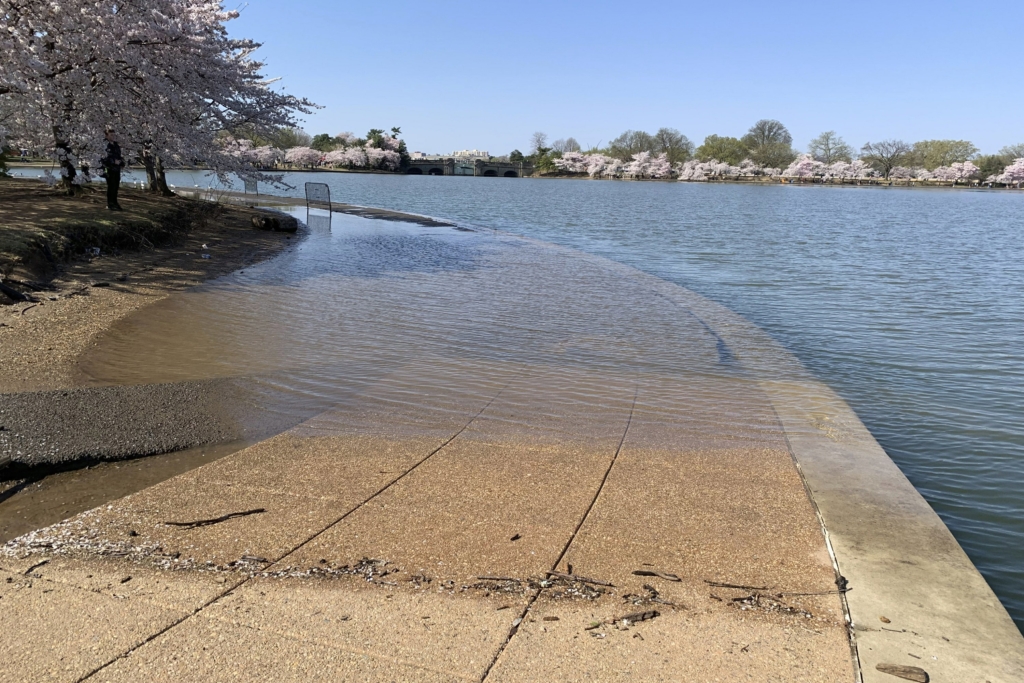Creeping floodwaters threaten Washington’s cherry blossoms – “The infrastructure is breaking down because of the daily flooding”

By Ashraf Khalil
3 April 2019
WASHINGTON, D.C. (AP) – Washington’s cherry blossom season has gone well this year, thanks to warm weather that has coincided perfectly with the annual blooming that draws hundreds of thousands of visitors each spring.
But officials are claiming that Washington’s iconic trees are under a looming threat that requires emergency action.
Decades of wear and tear from foot traffic, combined with rising sea levels and a deteriorating sea wall, have created a chronic flooding problem in the Tidal Basin . The 107-acre man-made reservoir borders the Jefferson Memorial and is home to the highest concentration of cherry blossom trees.
“The Tidal Basin is at a pivotal moment,” said Jeff Reinbold, acting superintendent for the National Mall and Memorial Parks division of the National Park Service. “The area was never designed for the kind of use it sees today.”
The National Park Service, along with the Trust for the National Mall and the National Trust for Historic Preservation, is undertaking a campaign to save the Tidal Basin. In addition to rebuilding the battered sea wall and addressing the flooding problem, the groups want to improve walkways and update security systems.
Twice a day at high tide, a large stretch of sidewalk next to the Jefferson Memorial is submerged by the rising waters. During the heavy rains that routinely occur in Washington, the floodwaters completely overflow the sea wall in multiple locations and soak the tree roots.
It’s more than just an inconvenience.
Teresa Durkin, senior project director of the Trust for the National Mall, said the higher silt concentration of the floodwaters is shortening the life span of the hundreds of cherry blossom trees that ring the basin.
“The infrastructure is breaking down because of the daily flooding. The trees are being inundated with brackish water,” she said. “People do love these trees and we keep having to replace them.”
Early estimates are that the rehabilitation project would require as much as $500 million, with organizers seeking a combination of government money and private donations. [more]